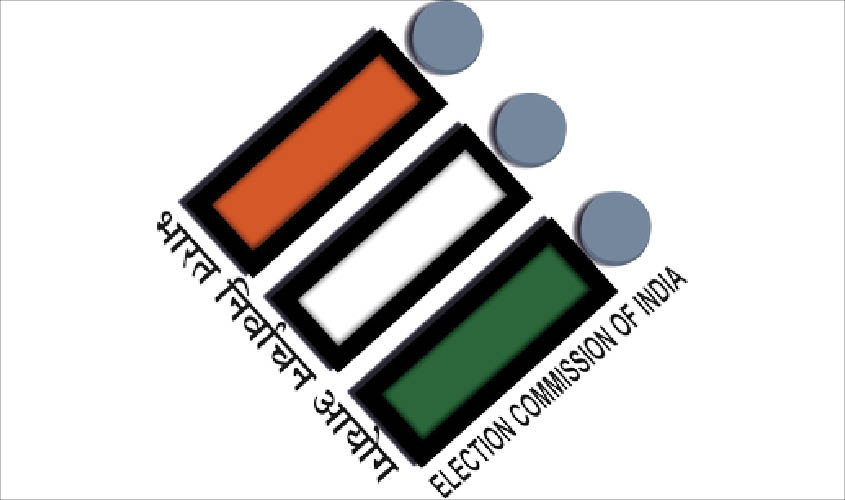There are at least 40 seats where candidates spend exorbitantly.
The Election Commission (EC) of India has fixed an upper limit of Rs 28 lakh for expenditure of a candidate in the coming Assembly elections in Telangana. However, reports have indicated that some candidates in urban and agriculturally rich constituencies are readying to spend as much as above Rs 10 crore. The poll panel has sought the help of the police in tracking the misuse of money power.
According to independent election observing groups, Telangana is one of the few states in the country that are notorious for unbridled election expenditure, mostly spent in the form of bribing the voters, both individually and collectively. Of the total 119 Assembly constituencies in the state, there are at least 40 seats where candidates spend over Rs 10 crore on electioneering.
The Chief Election Officer (CEO) of EC, who looks after the 7 December Assembly elections, has taken cognizance of reports of large scale use of money power in Telangana and sought the assistance of the police in tracking and curbing the violations. A letter from the CEO has informed the Telangana DGP office of the use of money power many times more than the allowed limit.
Sources in the CEO and the DGP office in Hyderabad told The Sunday Guardian that serious efforts are being made to curb distribution of money by the candidates. Already, the police has set up checking points across the state and started conducting random checks on vehicles and offices. Usually, this happens only after the issue of notification, this time it is on 12 November.
However, this time, cops have begun search operations right from the announcement of the poll schedule on 7 October. Not surprisingly, the police has so far recovered Rs 75 crore in cash from half a dozen check points. Around Rs 45 crore has been seized from five SUVs along the border of Telangana-Andhra Pradesh and the rest of the amount in bags in small cars.
This is alarming as Rs 100 crore was seized from different candidates in 2014 elections and this time, the cash factor appears to be bigger as the election process is yet to pick up. In 2014, a car suspected to belong to a Congress minister (N. Uttam Kumar Reddy, now he is president of the Telangana Congress Committee) was found abandoned on the roadside with Rs 3 crore cash bundles partially burnt.
However, Reddy denied the cash belonged to him, but the cash is still pending. Around 114 cases of cash seizures are still pending with the police and an amount of Rs 70 crore is still unaccounted for as no one came forward to claim the same. Last time, when Assembly and Lok Sabha elections came together, the maximum amount spent by some MLA candidates was estimated at around Rs 5 crore.
The CEO will be forming Expenditure Observers to monitor the money spent by the candidates in the elections, but they will be counting the amounts only from the date of filing of nominations and not before. The present situation is somewhat difficult to monitor the money flow, as the ruling TRS has already announced 107 candidates out of the total 119 Assembly seats.
These candidates have commenced electioneering in full scale and visiting villages, towns and reaching to the voters, but their expenditure is not counted as there is still three weeks to go for filing nominations. The BJP has announced 38 candidates and other Opposition parties like Congress and TDP are yet to finalise their candidates, but informal campaigning has begun in some 30-4- seats.
Usually, the EC depends on the daily and weekly statements filed by the candidates on the money spent by them after filing nominations. Not surprisingly, it never exceeds the allowed limit of Rs 28 lakh. However, everyone knows that the money spent by a ruling party (in most cases the nearest strong Opposition candidate also) is far more than Rs 30 lakh per day, during the two-week campaign time.
According to some sitting MLAs from both TRS and Congress, most of the money is distributed well before the filing of nominations on communities—caste organisations and village development groups— mostly informal in nature. “Sometimes, we will have to give Rs 10 lakh to Rs 25 lakh to each village for building some common asset like a temple or mosque,” said a TRS MLA from Nalgonda district.
This MLA, who preferred not to be quoted, spent about Rs 1 crore for taking the support of four crucial villages (strongholds of Congress). He distributed the money to elders of the villages in the presence of all caste leaders who pledged their votes in front of a local temple. The small amounts of money are usually spent on individual voters only a couple of days before the polling.
The amounts spent by the candidates are separate from that of the recognised political parties. Often, the money spent by the candidate is never actually counted as most of his electioneering is looked after his followers or supporters. The CEO’s teams of officials are finding it difficult to calculate the amounts as the bills/invoices are either undervalued or fake.
CEO Rajath Kumar told this newspaper that separate panels are being formed in his office to track the money spent by each candidate on media advertisements, including paid news. “We have imposed limits on broadcast of a candidate’s campaign for more than 12 minutes a day; similarly, we will also seek explanation from the press if they devote more space to a candidate,” he said.

